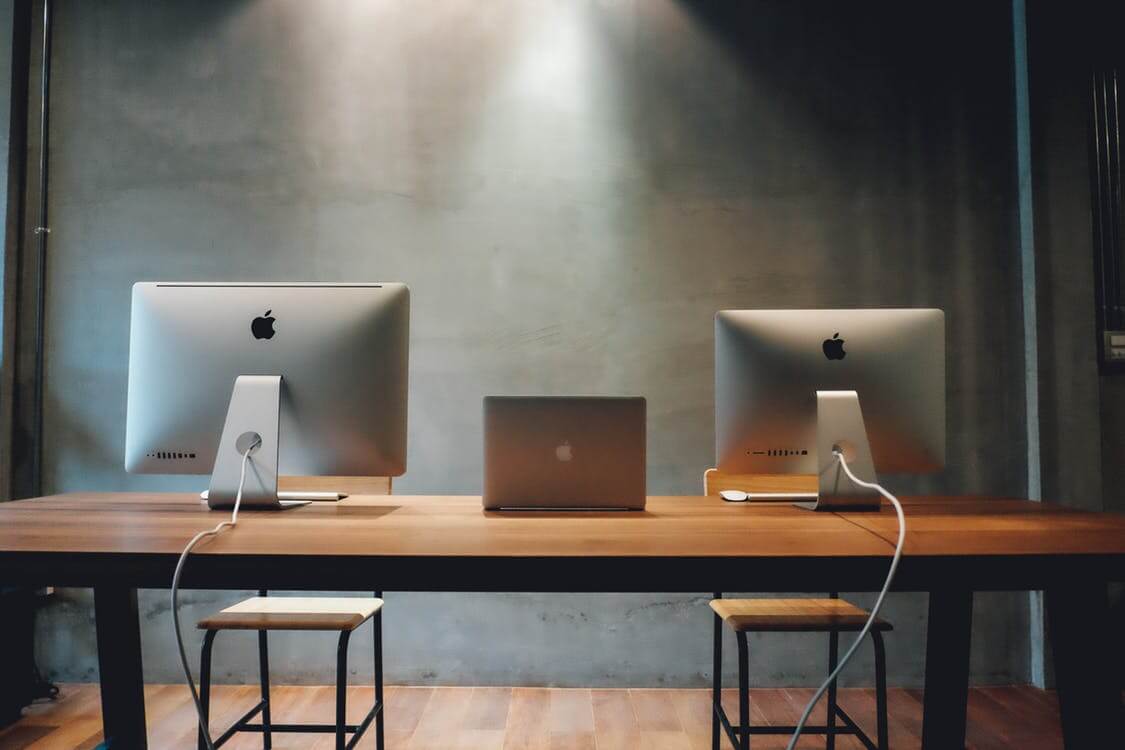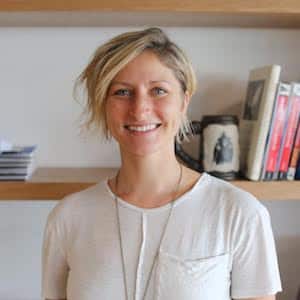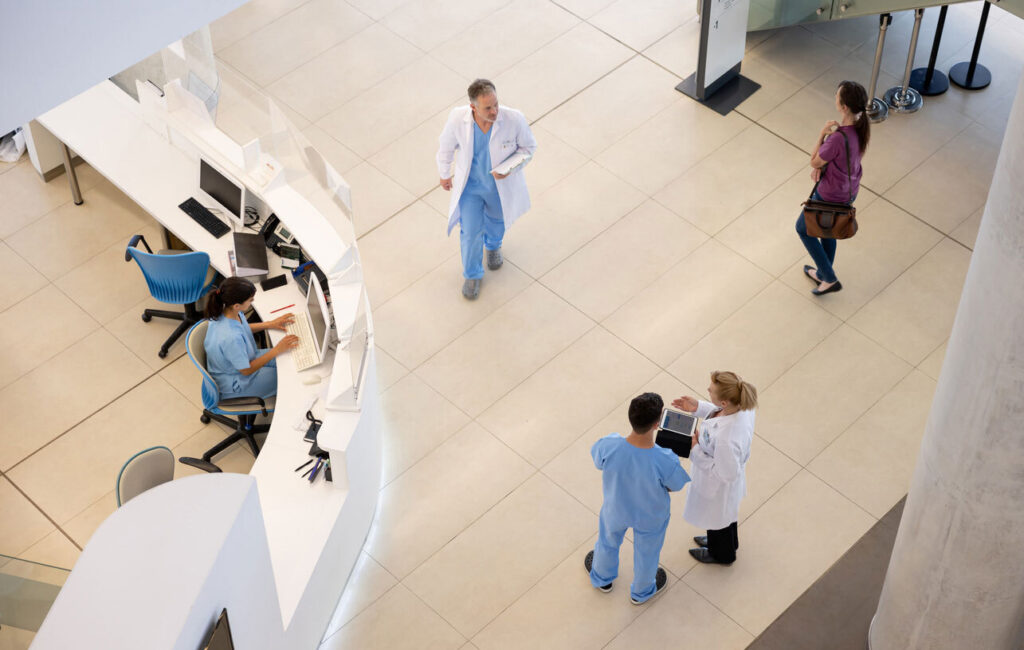New School Office Design for an Old School Industry
By Patrick Cwiklinski• 6 mins read•December 14, 2018

Director of Workplace Experience at Simple Finance, Sarah Drew is disrupting the traditional corporate banking culture with the vibrancy of a tech startup.
The finance industry has always been built on safety and security. Dealing with sensitive client data and concerns on a regular basis, a bank is probably the last place you’d expect to see a giant graffiti mural created by local artists.
Sarah Drew, Director of Workplace Experience at Simple Finance, is at the helm of creating a different kind of office space that stays true to the company’s traditional banking roots ushered in by their parent company, while maintaining their original identity as a tech startup.
What would you say is the best cultivated feature of your corporate culture, and what do you attribute to the success of that outcome?
Drew: Trust. We’re at the size right now where we’re almost going through a re-identification process of our own culture. The initial company culture you have is heavily attached to your founding CEO. That can’t be helped, they built the company and their culture fingerprints will be forever part of it. When you go through a CEO switch, which almost every company does after 7-9 years (and what we’re doing right now) you’re taking a step back and asking what you want your culture to be. What can we take with us? What needs to be left behind?
A shift we have made is refocusing on the employee voice. Employees know better than anyone else why they show up each day and the tools, places, and options they need in order to create a productive, connected work environment within their team.
There is a trust between the workplace team and employees that we will do our best to create the best space for them within our means. Since there is that trust, they also understand what “within our means” means. Trust is by far the biggest thing in a workplace and something that you’re continually building as companies move, shift, and change. It should never be taken for granted.

As a company with a tech focus functioning within a more traditional industry like banking, what kind of approach does Simple have when it comes to the physical workplace — especially since there are no physical banking branches?
Drew: When you don’t have brick and mortar spaces, it becomes all about your product and the customer experience. Our spaces need to foster the work that the product and engineering team needs to do so we can handle calls and customer connections through our customer operations team.
In that way, we are very much like other tech companies you see out there. We have no private offices, we work in an open plan, we have ping pong tables, Lego, arcade games, puzzles, beer, coffee, snacks, and a massive all-hands space. If it’s found it tech, we most likely have it. That’s not because we built the space trying to be something — we created the space for who we are.
I know that’s something you kind of eye-roll at in tech. But when dealing with finance in particular, that’s really huge. Our CEO has a space right in the middle of product and engineering, he’s not hidden in a corner or tucked away in a private area. He sits in on phone calls and listens to what our customer operations team is experiencing on a daily basis. A CEO’s engagement with employees is critical and we are fortunate to have a CEO that leads with this kind of transparency and connection.

How do you balance working in an open office space with privacy issues, especially when dealing with sensitive data in the finance industry?
Drew: I think the second I say “nobody has private offices,” everybody thinks it’s an open office from hell. Open offices have received a bad rap because they’ve been poorly designed over the years and research articles have been based mostly on these poor designs. Goals have been set on densification and trends versus business needs and function. Privacy and security are the biggest pieces that feel threatened as something that will be lost when going into an open office model.
It’s a real challenge, but it’s only a real challenge if you ignore it. One thing we realized is that we can’t just have a big open room full of desks. After about every 12-20 people, we need some kind of a divide — we need neighborhoods. We focus a lot on building neighborhoods that create more security, intimacy, and space between departments.

In terms of employees, there are obviously different needs for people working in, say finance versus IT, for example. How is Simple’s physical headquarters in Portland set up to meet the needs of such a diverse workforce?
Drew: Though the days of working an entire day at our desks are limited, there are some teams that still work 80% or more of their day from there. This is why the desk still needs to be a critical investment. They need to be fully ergonomic, sit-to-stand with monitor arms, easy technology, and no monitor glare. They need to fit and function well with you. With the reduction in desk size and square footage to employee we are seeing, I believe it’s still important to have some personal space to nest.
We are all in Herman Miller Renew Link and our desk sizes vary depending on department needs, as well as the desk options you may have. We range from 24×48 to 30×60, through panel dividers to fully open pods of six.
We work to adjust all our desks to fit the needs of each department and we modify our spaces as best as we can to fit their needs as well. We have a motto “build, measure, learn” that we constantly put into practice in our workplace. A recent pilot we did was to make one entire section of the floor a quiet space that fit up to 42 employees, based on feedback of distractions and focus time needed. In the end, what started as a larger population with the request ended up being only three people who actively used it. So we adjusted, hence “build, measure, learn.”
Technology-wise, our company is on point. Like most tech companies, we’re all on Macs and everything is plug-and-play. Each team gets the technology that works best for their needs. Engineering has very different needs from a department like finance. We don’t just give everyone a laptop and a monitor, we find out what they really need and make it work from there and we treat our remote workers the same way. I can also not stress enough how the workplace and IT teams need to have solid partnership, collaboration, and support of each other.
Another important thing to have is options. Excluding your desk, we have a number of different ways an employee can enjoy their day. In a booth, in a lounge, in our quiet room, and more. In an open office, you need several options and scenes to be able to work from or to find refuge. Your phonebooth and private space ratio also has to be high and it needs to be easily accessible by each neighborhood or team. It’s also always a good idea to hire a lighting and acoustics consultant.

What kind of challenges do you face as the Director of Workplace Experience in order to ensure both the tech and traditional elements of the organization are in sync?
Drew: Like any company our size, we have to work through change. Keeping our employees as connected as possible and continuing to foster our community isn’t necessarily a challenge, it’s just a constant. Beyond the space, our team is heavily ingrained into creating community. Having a beautiful space isn’t enough. It needs to function, make sense, have a purpose, and tell a story. If we did have a challenge, it’s the pressure we put on ourselves to try to create the best environment possible for our employees within our means.
In order for us to best serve Simple’s customers, we need to ensure that we are providing the complete human experience for our employees. This includes emotional, physical, and mental safety. The broad term of culture isn’t created by the space. A space can foster it, but it’s up to leadership and internal collaborators to bring it to life. Connecting these dots can be a big challenge, but I am so proud to say that I work at a company that takes this seriously and is passionate about not only our customer experience, but our employee experience.
Find out more about how Simple Finance can help you with your banking needs at their website.
How do you think startups should balance tech and tradition in the workplace? Join the conversation and leave us a comment below.
Photos: Shutterstock, Green Chameleon, Pexels, Pixabay




